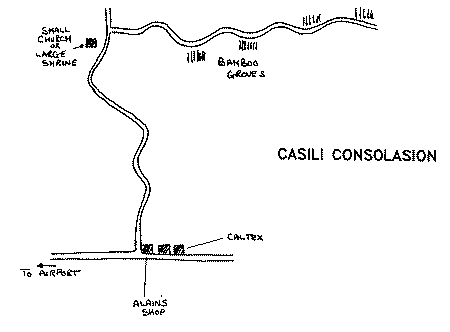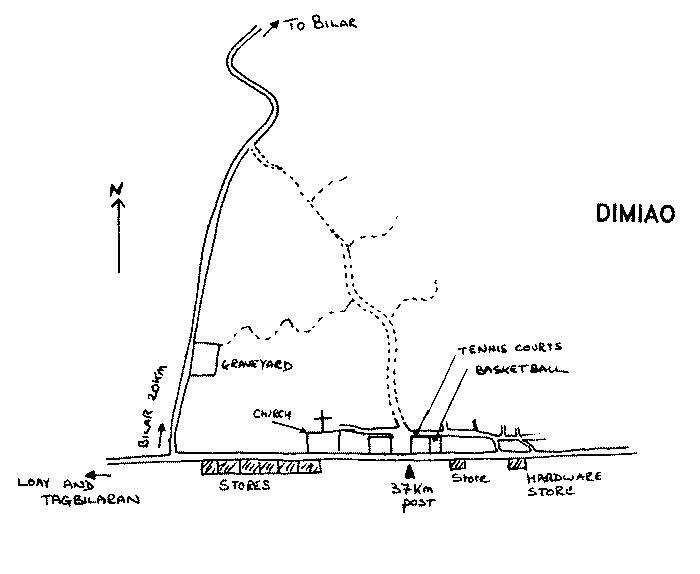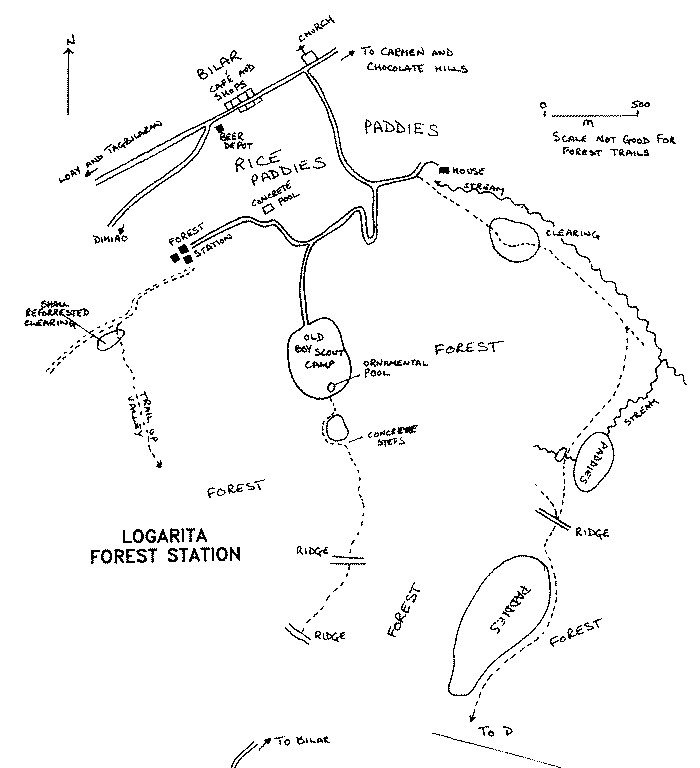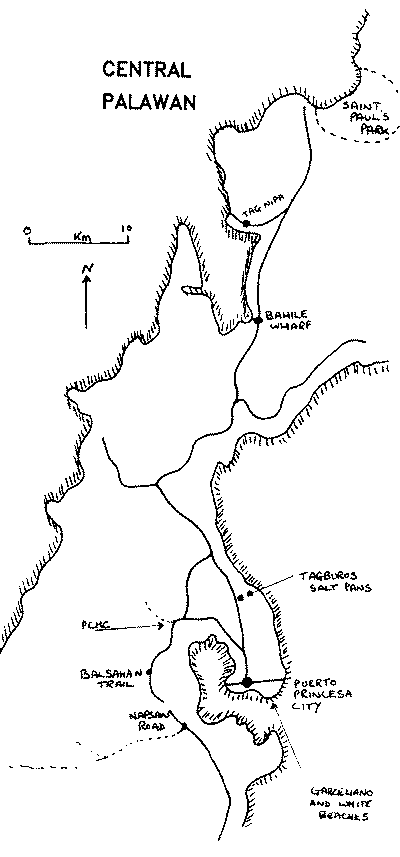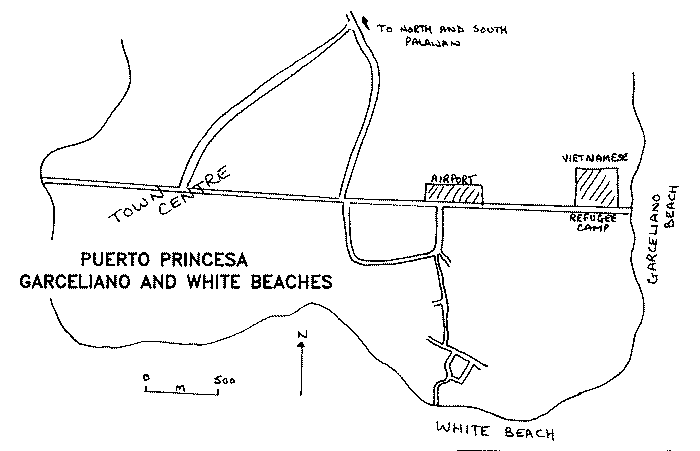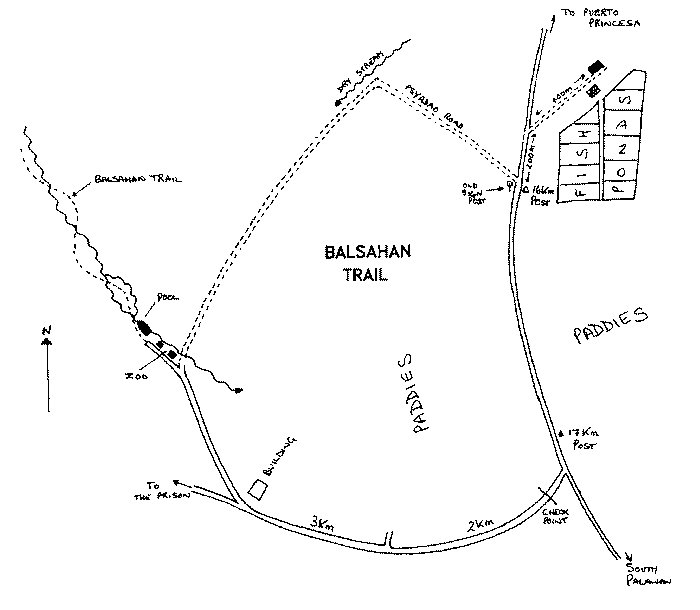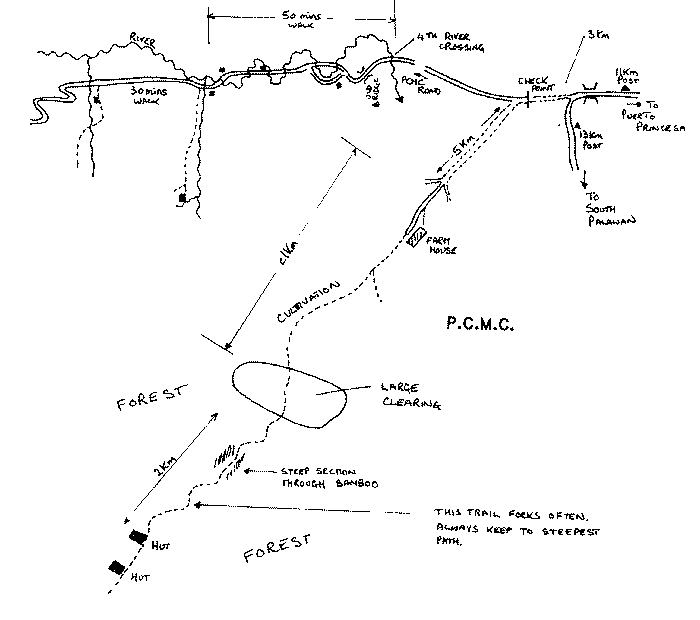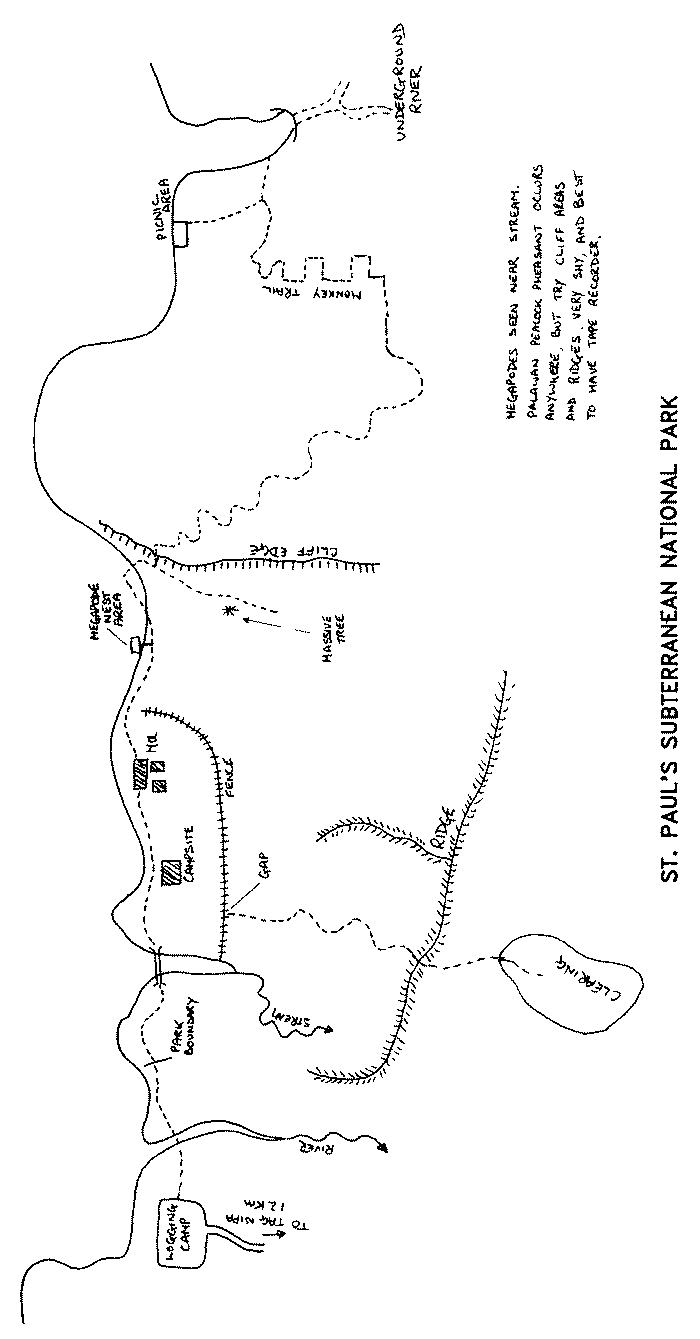Section 1 - Introduction, logistics and general information.
Section 2 - Birding sites (Mindanao and Luzon).
Section 3 - Birding sites (Cebu, Negros, Bohol, Palawan)
Cebu 1. Casili Consolasion
|
The original habitat of Cebu has long since been completely removed. The CEBU BLACK SHAMA had been considered extinct, but was recently rediscovered in degraded bamboo thickets. This is the only known site for it. As it is an extremely skulking species you are very unlikely to see them without a tape recording. Unfortunately, because of a cancelled flight from Bislig I was unable to make contact with my guide in Cebu City and had to work the area on my own, and consequently dipped! |
Species recorded at Casili Consolsian:
PHILIPPINE NIGHTJAR 3 |
Pied Fantail 2 |
Negros 1. Mount Canloan National Park
This National Park, near Bacolod, supports an area of hacked over forest. In Bacolod, take a jeepney from Libertad Street to Mount Canloan Resort, where basic food and accommodation are available. A small wooded valley runs from the resort to a waterfall, and from there through grassland, cultivation and forest. Not a highly studied area, but the Negros endemics ROUGH-TEMPLED TREE-BABBLER and WHITE-WINGED Cuckooshrike occur.
Bohol
Tagbilaran, the largest town on ornithologically under-explored Bohol, is a ten minute flight from Cebu. The small number of tourists that Bohol receives come to see the famous Chocolate Hills near Carmen or enjoy the splendid diving and snorkelling on the reefs around the island. There is plenty of accommodation in and around Tagbilaran town. My stay concentrated on scrub areas around Dimiao and the Logarita Forest Station near Bilar. There is possibly accommodation at Bilar, though it would be better to try to arrange something at the Forest Station. There is no hotel in Dimiao, though camping would be possible.
Bohol 1. Dimiao
An area of dry, open scrub and scattered remnants of forest, interspersed by agriculture. The graveyard is well worth a visit if you want a real skull as a souvenir. From Tagbilaran it is one hour by bus or jeepney. Food and drink are available in the village. The weather was hot, and despite a lot of effort few species of note were seen, though MINDANAO TAILORBIRD was a highlight, as was Bundok Flycatcher, previously unknown from this island, and possibly representing a new sub-species.
|
|
Species recorded at Dimiao:
Cattle Egret 10 |
Eastern Red-rumped Swallow 3 |
Bohol 2. Rajah Sikatuna National Park
The Logarita Forest Station, near Bilar, is situated within the Rajah Sikatuna National Park. The area supports primary forest covering limestone hills. There are also large areas of rice paddies around the village. This is one of the few places in the Philippines with a proper reforestation project. There are several trails around the station, and it should be possible to find trails all the way to Dimiao. Habitat is excellent, and the area is well worth several days. This is the easiest place to find STREAKED GROUND-BABBLER, and other birds include BLACK-CHINNED FRUIT-DOVE and PHILIPPINE FROGMOUTH. Food is available in Bilar, the local village. It is a one hour journey by bus or jeepney from Tagbilaran to Bilar. Stay awake on the bus as locals will assume you are going to Carmen to see the Chocolate Hills. Basic hotel accommodation is available in Bilar, or you may be lucky enough to be able to stay at the Forest Station.
|
|
Species observed at Logarita:
Asiatic Honey-Buzzard 1 |
STREAKED GROUND-BABBLER 2 |
|
Palawan A peaceful, relaxing island with a low population and plenty of remaining forest. Lying to the west of, and away from, the main group of the Philippine islands, many of the species encountered here are more typical of the Asian mainland. Previously, the capital Puerto Princesa was only served by flights from Manila. However there is now a twice weekly service from Cebu City. Puerto Princesa makes a good base, as many of the birding sites are close by. As roads outside the town are not tarmacked, and public transport is rather limited, it is best to hire a tricycle and driver. There is plenty of accommodation in town. For the best food in town I recommended the Vietnamese restaurant inside the Vietnamese refugee camp at Garceliano Beach. Palawan 1. Garceliano and White Beaches These two beaches, just east and south respectively of the airport, can be birded within a few hours. There is more scrub at White Beach, while Garceliano is best at high tide when waders, herons and egrets are pushed up into the sparse mangroves that remain. The mangroves are being cut by the Vietnamese refugees living in the area, and I also saw children with catapults. These two beaches effectively form one stretch of coast, though I am not sure if it is possible to walk a complete circuit. These are known sites for Chinese Egret and Great-billed Heron. |
|
|
Species observed at Garceliano and White beaches:
Little Green Heron 1 |
White-collared Kingfisher 18 |
Palawan 2. Balsahan Trail
An excellent trail through secondary and cut-over primary forest, 45 minutes south-east of Puerto Princesa. All but two (PALAWAN PEACOCK-PHEASANT and PALAWAN TREE-BABBLER) of the Palawan endemics have been seen here. The area is within the Iwahig penal colony, where prisoners work in an open prison environment. One or two days should be enough to cover the area adequately. At the start of the trail there is a swimming pool and a few stinking cages housing some poor animals under the pretext of a zoo. Although this area is a family picnic site there is no food or drink available. The nearby fish farm and extensive paddies alongside the main road are good for waders. Balsahan is about 45 minutes south-east of Puerto Princesa.
|
|
Species observed at Balsahan Trail:
Little Green Heron 1 |
Pacific Swallow 6 |
Palawan 3. PCMC Road
This dirt road runs up to a disused camp of the Philippine Copper Mining Corporation (PCMC). Turn right, off the main road, 12 km north-west of Puerto Princesa at the point where the main road turns to the south. Take a tricycle as far as possible and walk the rest of the way. There are eleven river crossings and then the track winds up into primary forest. There are some disused huts, so it would be possible to stay the night. Ruddy Kingfisher and PALAWAN PEACOCK-PHEASANT occur, though the later is rare due to trapping. Most visitors have concentrated on the road proper, but I turned off at the entrance and walked up into the forest along a rattan cutters trail for several kilometres, which was equally as productive, and a lot less effort.
|
|
Species recorded along the PCMC Road:
Chinese Goshawk 2 |
PALAWAN TIT 2 |
Palawan 4. St. Paul's Subterranean National Park
This National Park, on the west coast 60 km north of Puerto Princesa, is best reached by boat. From Puerto Princesa take a jeepney to Bahile wharf (about 90 minutes), and then a boat to the park (a further three hours). Try to find someone else going at the same time or it could be expensive. The park is famous for its underground river, and it's well worth taking the hour or so ride through the caves. The habitat is forested limestone hills, and although extensive, there are only a few trails for walking. Specialities are PALAWAN PEACOCK-PHEASANT, nesting Tabon Megapode, and the possibility of PHILIPPINE COCKATOO. Three days is enough to cover the area, mainly because of the limited extent of the trails, and the walk to Tag Nipa could be worth a day. It's also possible to take a boat from there to Bahile, cutting down the return boat journey.
|
|
To arrange a visit, first obtain a permit from the Bureau of Forestry in Puerto Princesa. There is normally a limit of two nights stay at the park, but I stayed three, and it wouldn't have been a problem to stay longer. Basic accommodation and cooking facilities are provided, but take your own food, although it is possible to eat whatever the staff have prepared. You can also buy beer and biscuits if they have stocked up.
Species observed at St. Pauls:
Lesser Frigatebird 1 |
Bar-bellied Cuckooshrike 4 |
Palawan 5. Tagburos Salt Pans
An area of saltpans adjacent to the coast 15 km north of Puerto Princesa, which can be viewed en route to Bahile Wharf. It regularly has Chinese Egret.
Species observed at Tagburos Salt Pans:
Pacific Reef-Egret 2 |
Lesser Sand-Plover 1 |
Palawan 6. Napsan Road
This is an area of forest further south, past the turning to Balsahan. Formerly a reliable site to see PHILIPPINE COCKATOO, but this species has now become difficult everywhere due to trapping for the cage-bird trade. Take a right hand turning off the main road after the 22 km post just after some cement silos. It's about 20 km along this road to decent forest, but the cockatoos could be seen in the open logged forest before then.
Section 1 - Introduction, logistics and general information.
Section 2 - Birding sites (Mindanao and Luzon).

